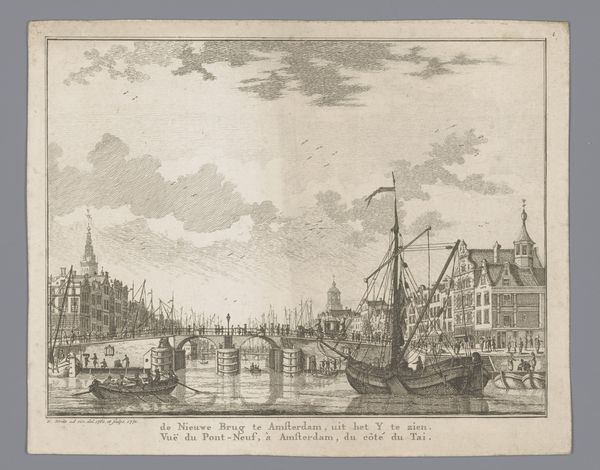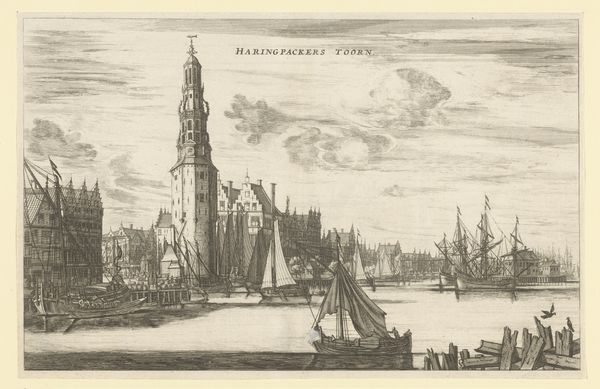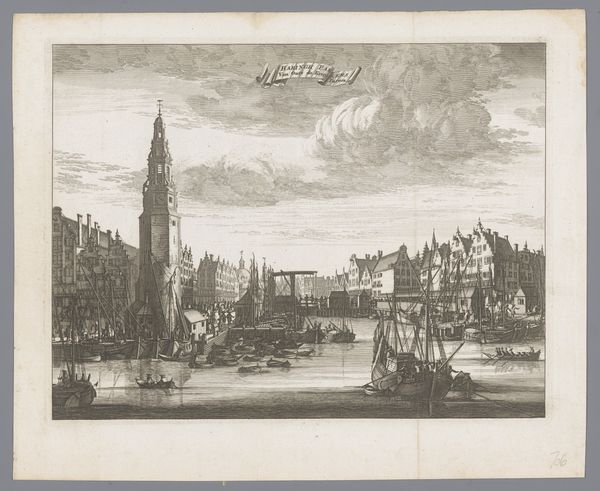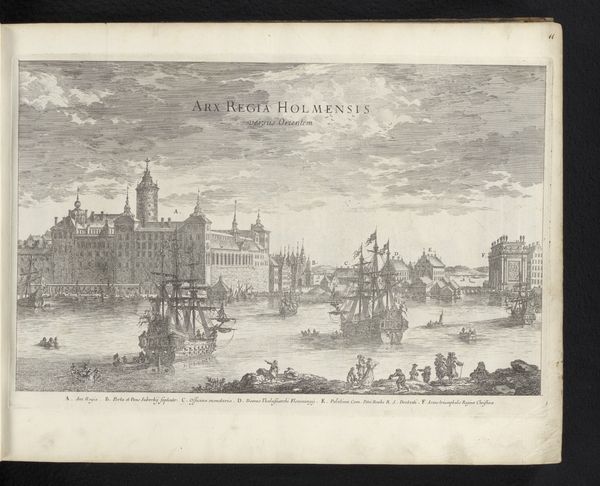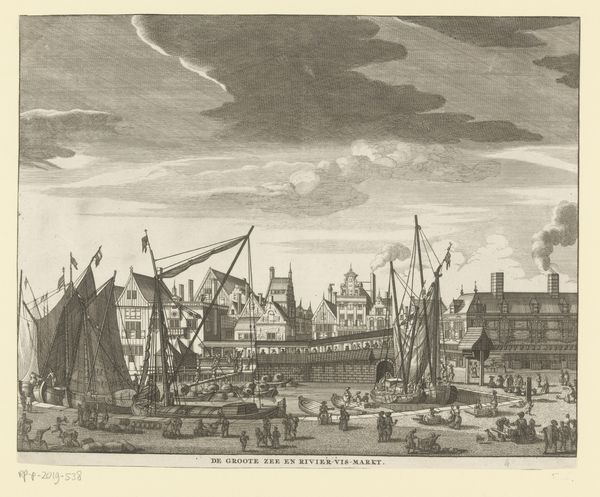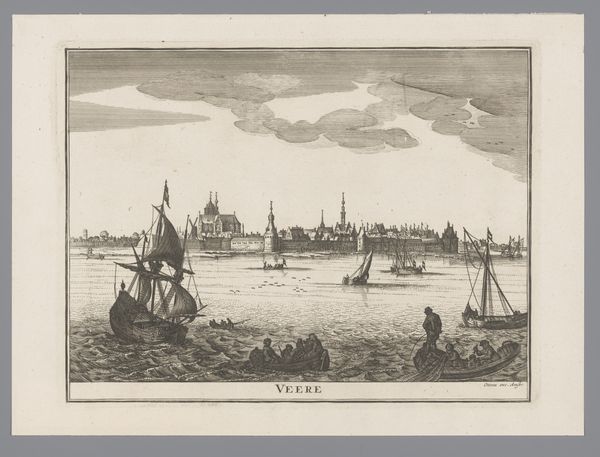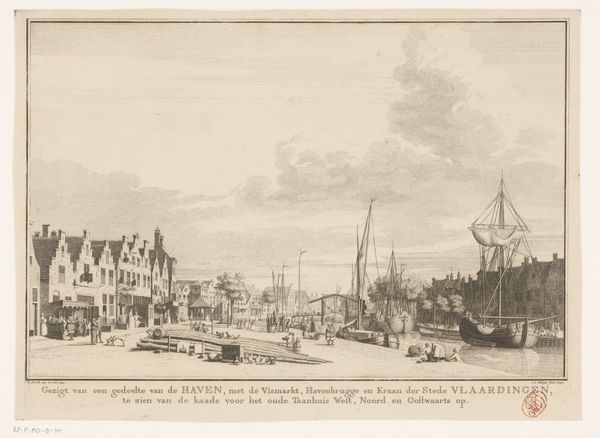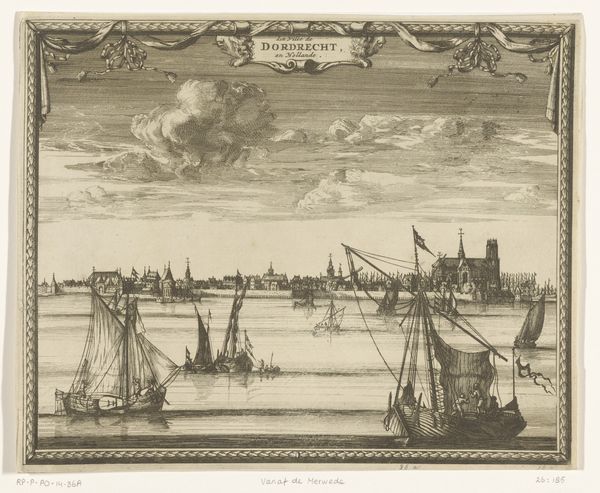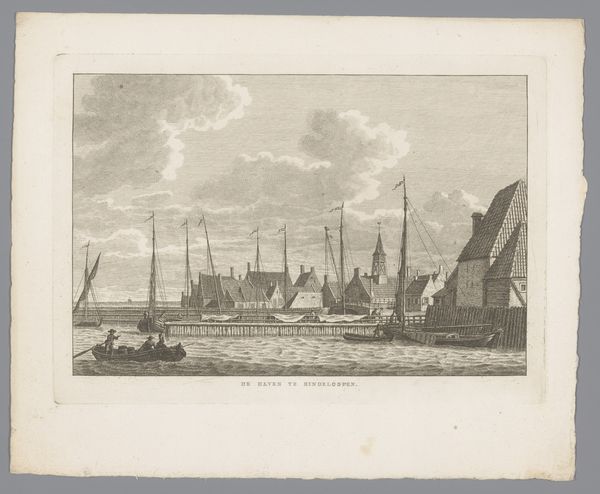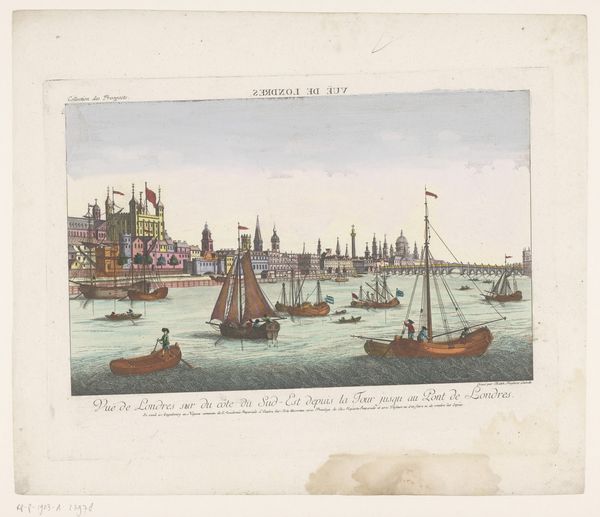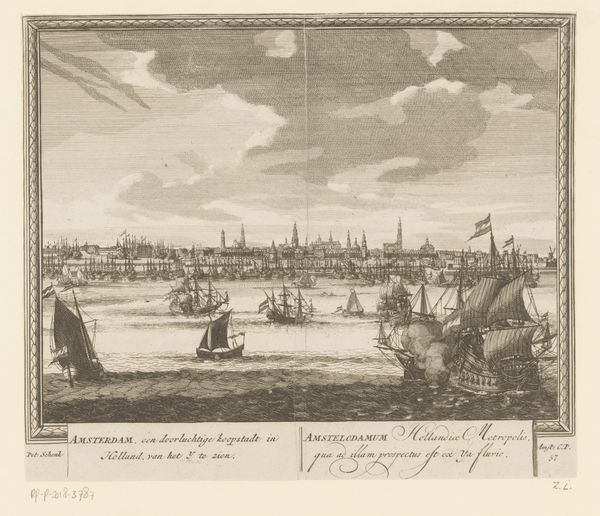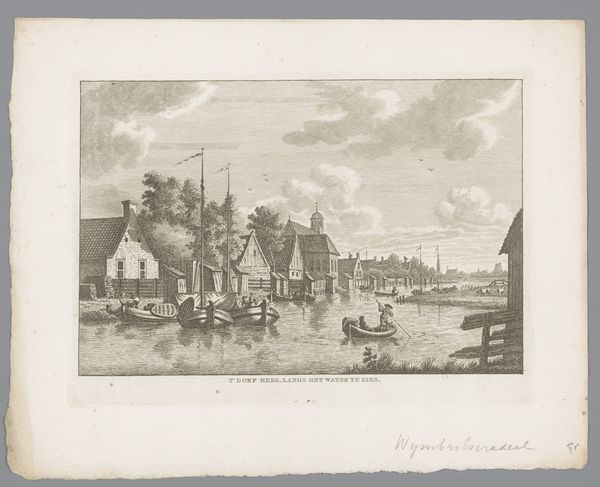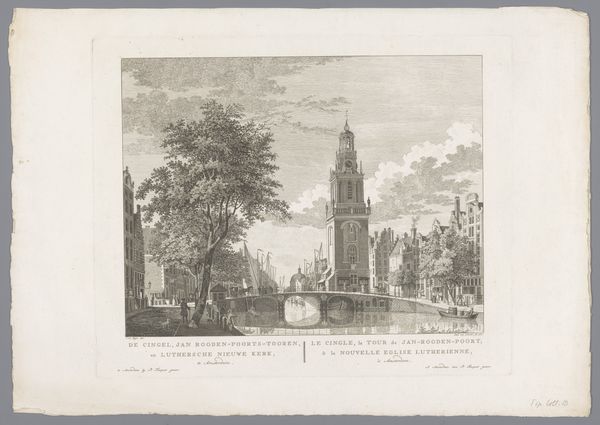
print, engraving
#
dutch-golden-age
# print
#
landscape
#
cityscape
#
engraving
Dimensions: height 150 mm, width 184 mm
Copyright: Rijks Museum: Open Domain
This print, showing the Haringpakkerstoren in Amsterdam, was made anonymously using a process called engraving. An engraver uses a tool called a burin to manually carve lines into a metal plate. Ink is then applied to the plate, and the surface is wiped clean, leaving ink only in the engraved lines. The image is then transferred to paper under high pressure. The technique allows for extremely fine detail, and if you look closely, you'll see how this quality is used to capture the textures of the architecture, water, and sky. But the real story here is the context. Engravings like this one were essentially a form of mass media. They circulated widely, helping to visualize Amsterdam as a center of trade and maritime power. The image itself depicts a hive of activity, reflecting Amsterdam’s status at the time. So, in considering this print, remember that the meticulous craft of engraving and the bustling scene it represents are both testaments to a particular moment in economic history. The skilled labor of the artist meets the labor of all those represented in the scene.
Comments
No comments
Be the first to comment and join the conversation on the ultimate creative platform.
